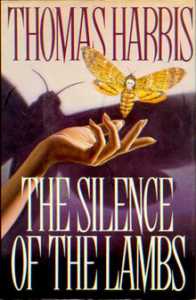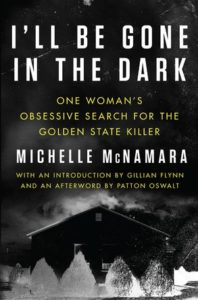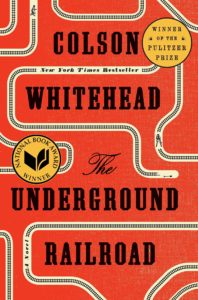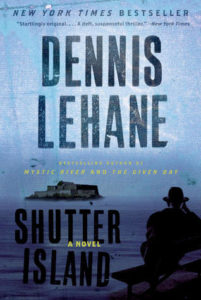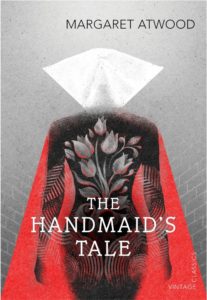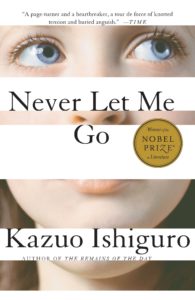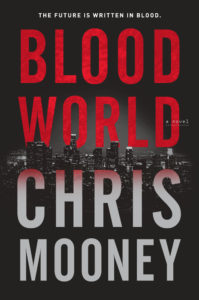A few years back, I had been reading an article about how some uber-rich Silicon Valley tech types had turned their attention (and their considerable fortunes) to “bio-hacking” longevity, experimenting with full body blood transfusions mixed with different types of medications. My imagination went haywire.
In the following days, I had developed an idea involving “carriers”—people with a gene that allows their blood to operate at maximum efficiency. They live longer, are healthier, and look much younger than their actual age. When a regular person—a “non-carrier”—gets a full-body transfusion of carrier blood mixed with a certain chemical cocktail, the results are amazing. Say goodbye to fat and wrinkles and hello to smooth skin, increased muscle mass, strength and nearly unlimited energy … and the sex life of your dreams!
The problem was, I’m not a sci-fi/fantasy writer. While I absolutely love the genre (my office is decorated by the twelve-year-old me who, as a kid, fell in love with Star Trek, Star Wars, Aliens, and comics), I never had any ambitions about writing sci-fi or fantasy. I don’t have any skill in that area, especially when it comes to the hard (and long) work that goes into world-building, so I shelved the idea and went back to writing what I know and do best: page-turning psychological thrillers and crime novels.
Then I happened to discover Netflix’s Black Mirror, a brilliant and phenomenally addictive TV show that combined all sorts of genre stories into a sci-fi dystopian setting. That’s when I decided to combine my blood idea with a crime novel. The result was Blood World, a psychological crime thriller where, in the not so distant future, carriers are getting kidnapped in record numbers and imprisoned in these illegal “blood farms,” where their blood is sold for big bucks to the rich and powerful.
Sometimes when you mix things together, the results are amazing, even spectacular. As I was writing Blood World, I realized that almost of my all-time favorite books—the ones that had the greatest impact on me—were from authors who successfully incorporated elements from more than one genre. And now, it’s mid-August, the height of vacation season, and if, like me, you find yourself stuck in your backyard on a “staycation,” or lucky enough to live near a beach, you can do no better than these definitive, intelligent, page-turning, genre-bending classics.
The Silence of the Lambs by Thomas Harris
Harris invented the first forensics thriller with Red Dragon, the book that introduced us to the brilliant psychiatrist-turned-cannibal, Dr. Hannibal Lecter. In The Silence of the Lambs, FBI-trainee Clarice Starling goes to visit Lecter with the hope of getting him to cooperate with a psychological profile. Lecter has his own agenda, one that will severely test the limits of Starling’s resolve. How far is she willing to travel into the darkness? It’s an extraordinary and well-executed cat-and-mouse game, but what makes this book a perennial classic—the model for every thriller that followed it—is how it shows us the psychological horrors living inside not only the serial killers but the people obsessively hunting them.
I’ll Be Gone in the Dark by Michele McNamara
Writer Michele McNamara, a true crime aficionado who turned her passion for cold cases into an immensely popular website called True Crime Diary, applied her formidable focus and skills to catching her “white whale”—uncovering a serial-killer she called “The Golden State Killer,” a burglar who committed at least 50 rapes and 13 murders in California during the 1970s and ‘80s … and then vanished. Seeing McNamara’s descent into the dark corners of her own mind and battling her person demons while the need to find the killer becomes all-consuming are chillingly real. This nonfiction classic focuses on the mental, spiritual and physical anguish—and personal stakes—of those people who dedicate their lives to bring real-life monsters into the light.
The Underground Railroad by Colson Whitehead
In this alternate history novel, two slaves, Cora and Caesar, decide to escape their horrendous conditions on their plantation in Georgia and make use of an actual, working underground railroad operated by a secret network that runs all through the South. Along the way, Cora is forced to kill a white man, and soon the two are being hunted by slavecatcher named Ridgeway. This is the great American novel—gripping, uncomfortable, and important. The book’s themes and messages resonate even more powerfully now. This is mandatory reading.
Shutter Island by Dennis Lehane
It’s 1954. U.S. Marshal Teddy Daniels and his new partner, Chuck Aule, travel by boat to Shutter Island, home to Ashecliff Hospital for the Criminally Insane, to investigate the disappearance of Rachel Solando, a patient who murdered multiple people and somehow managed to get out of her locked cell and past the hospital’s rigorous surveillance. A hurricane traps them on the island, and as Teddy and his partner search for Rachel, they begin to uncover something much more nefarious at work on the island. Take the best of the detective and psychological thriller genres, put them in a Gothic setting, and, in the hands of Lehane, you get you get one of the most compelling and imaginative works of psychological horror I’ve read in the last decade.
The Handmaid’s Tale by Margaret Atwood
Canadian powerhouse Atwood (award-winning novelist, poet, essayist, and critic) brings her incomparable literary talents into the realm of speculative fiction and delivers a story set in the not-so-distant-future where the United States is no longer a democracy but a theocratic dictatorship based in a totalitarian and Puritanical state called Gilead, where people are under constant surveillance. Nearly all women are infertile because of environmental toxins. Any fertile female is forced into reproductive slavery to bear children for the regime’s powerful elite. “Science fiction,” Atwood has said, “has monsters and spaceships; speculative fiction could really happen.” The book’s themes of gender roles, theocracy, government power, and using women’s bodies for political purposes and stripping them of their identity are more prescient and even more chilling today than when the novel was first published thirty-five years ago, in 1985.
Never Let Me Go by Kazuo Ishiguro
Another literary powerhouse, Ishiguro blends a dystopian sci-fi novel with a coming of age story that takes place in England, during the late 1990s. Kathy H. narrates her memories of growing up with her two friends, Tom and Ruth, at an exclusive boarding school insulated in the countryside. Teachers are known as guardians, and the children, who are monitored and create art projects instead of studying, have no family history. When they get older, they learn that they’re clones and will soon confront the harsh reality of their new life as a “donor,” where they will give away their organs, one at a time, until they die. Ishiguro’s brilliant use of language demands a slow and focused reading, but this award-winning book, with its themes of friendship, nostalgia, and grappling with identity, is well worth your time and attention.
***


